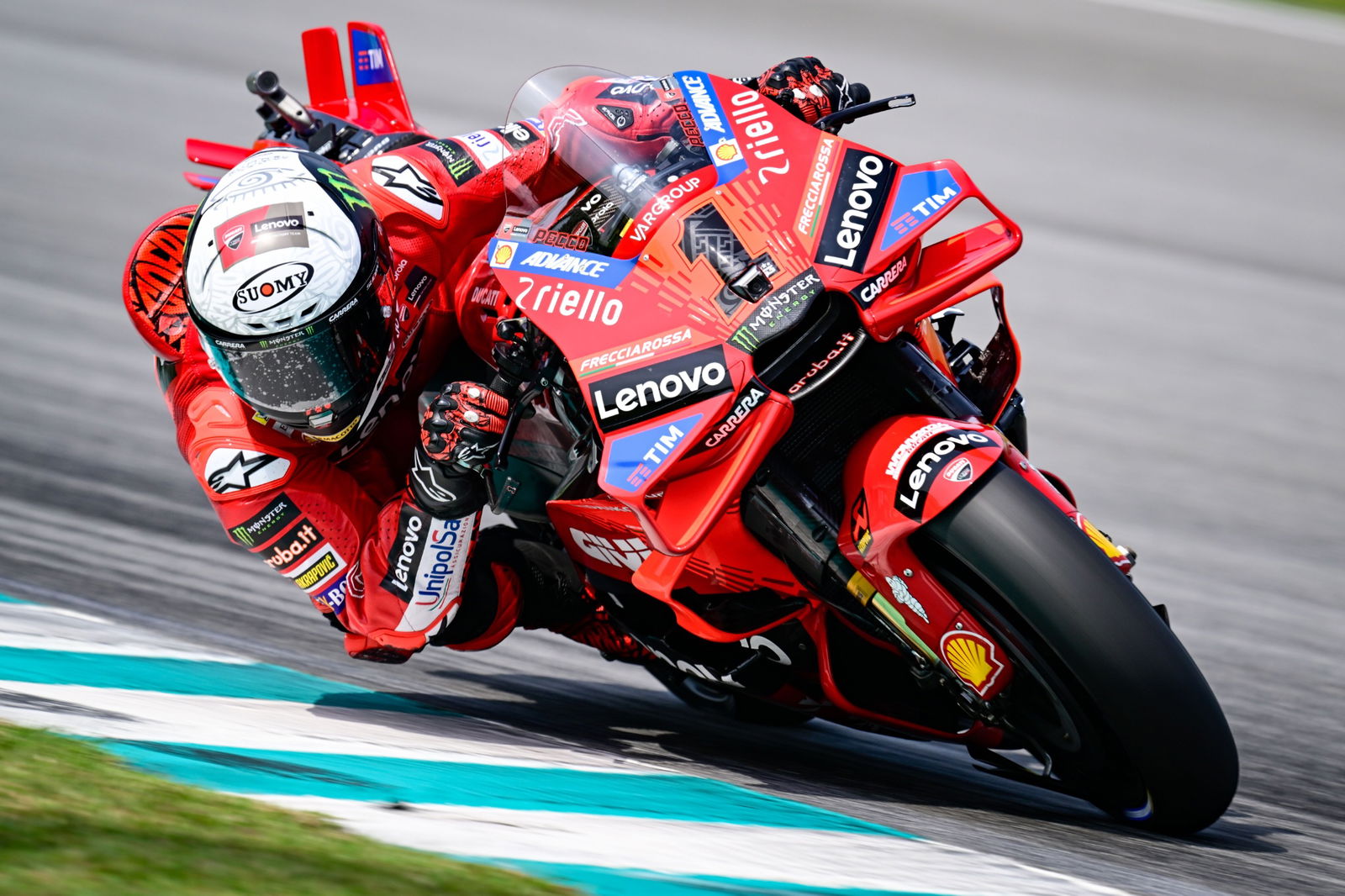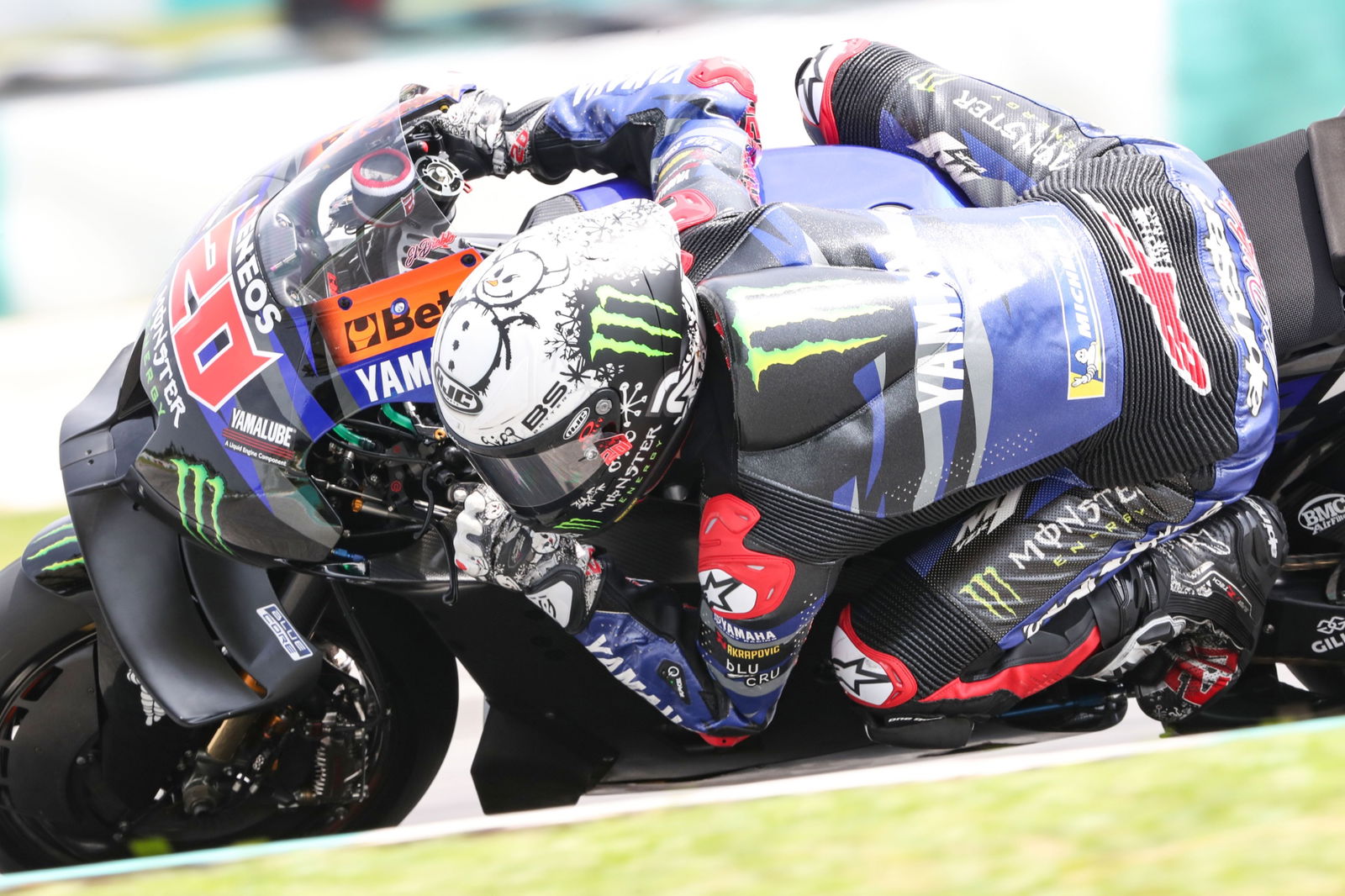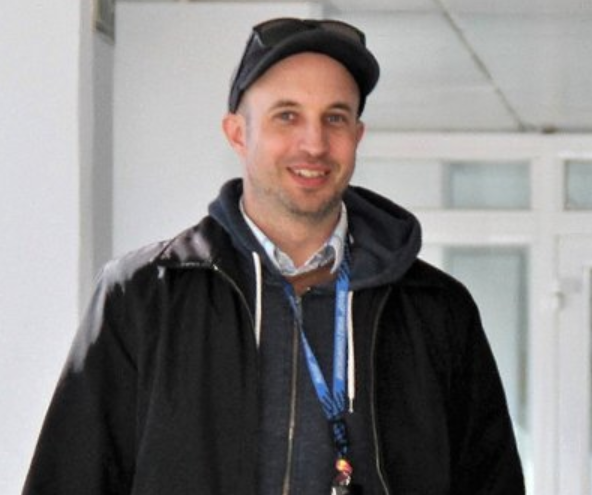2024 MotoGP tyre pressures: Warning gone - Disqualification, minimum, percentage ‘under discussion’
Exclusive: No warning for tyre pressure infringements in 2024 but disqualification could be replaced by a ‘big’ time penalty. Pressure limit might be lower but required for a higher percentage of race laps.

When MotoGP’s real-time tyre pressure monitoring system came into effect midway through last season, the usual disqualification was replaced by a warning and then escalating post-race time penalties of 3s, 6s and 9s for each subsequent breach.
But it was made clear that “Once teams have become familiar with the system, the target is to apply the standard penalty for Technical Infringements: disqualification.”
That was expected to mean disqualification for low tyre pressure from the start of 2024.
The definition of low pressure was failing to meet the minimum tyre pressure specified by Michelin for 50% of the laps in a full-length race, or 30% in a Sprint/short race.
Michelin’s minimum was set at 1.88 bar for the front and 1.7 bar for the rear.
But if the rate of 24 infringements during 12 rounds last season was repeated over the full calendar this year, with disqualification, it would cause carnage in terms of the race and championship results.
“I think they need to change something because next year will be a big disaster,” warned title runner-up Jorge Martin, who spent the final three rounds at risk of a penalty after using his warning in Buriram.
In some ways, the warning itself arguably made the situation look worse.
As the end of last season approached, teams and riders began treating the warning as a ‘joker’ to be used tactically: While only two tyre pressure infringements occurred during the opening six rounds of real-time measurement, 22 occurred in the last six, including 14 in the final three events.
Nevertheless, there’s no doubt there were genuine difficulties with trying to look into a crystal ball and accurately predict the correct starting pressure a rider would need to meet the minimum, while not going over 2 bar and losing tyre performance (see the explanation by Gresini crew chief Frankie Carchedi below).
“It's horrible,” said Aprilia’s Aleix Espargaro. “You cannot imagine the level of anxiety for the engineers. My engineer knows that if he sets it too high, I can't ride. And if it’s too low we have a penalty.
“But even if they do everything ‘perfect’, if I'm in the draft [slipstream], or I'm alone, or have a problem with the brakes, everything can change with the pressure. It's a nightmare.”
In other words, if a rider gets clear air in a race, the front tyre temperature and pressure drops and they risk being penalised for being below the minimum. But if the same rider starts at a higher pressure and becomes stuck behind another bike, the front temperature and pressure would rocket, causing them to lose grip.
“If you go over 2.1 bar, you have zero grip, zero brake performance and then it’s very dangerous,” said KTM test and wild-card Dani Pedrosa, a 31-time MotoGP winner who began his premier-class career in 2006.
“This is the area where the riders complain the most. As you go over 2-2.1 then the tyre starts to have big locking, and zero grip and it’s very easy to make a mistake and crash.”
“It’s ten times more unsafe when you’re over 2 bar,” confirmed KTM’s Brad Binder.
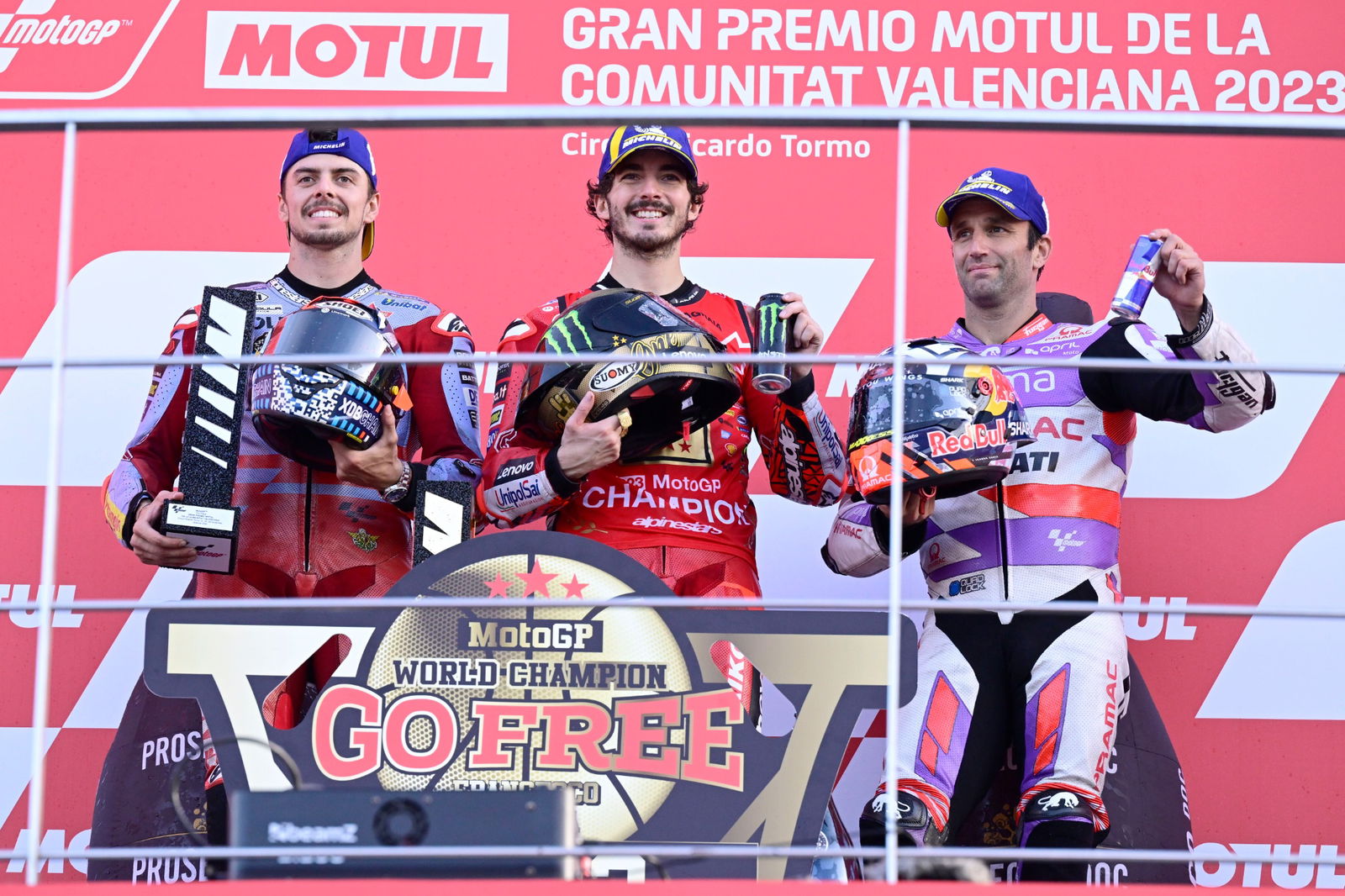
Four riders received a second low pressure infringement, meaning a 3s post-race penalty: Aleix Espargaro (Buriram) and then Luca Marini, Franco Morbidelli and Fabio di Giannantonio at the Valencia finale.
di Giannantonio’s was most costly, stripping him of a podium finish.
So what will the tyre pressure limits and punishments be for the 2024 season, which starts in Qatar on March 8-10.
The main request from the riders was to lower the minimum front pressure, to avoid topping 2 bar if they become caught behind other bikes.
“I understand that if it’s too low the tyre could come off the rim. But I’ve yet to see that… I’m sure every single rider would appreciate it if they could reduce the [1.88 bar minimum],” said Binder.
“I understand they put a rule for safety reasons, but I think we have margin to put 1.6 or 1.7 [bar minimum],” said Johann Zarco.
Crash.net spoke to MotoGP’s director of technology, Corrado Cecchinelli, to find out the latest.
Much remains up for discussion but the good news for the riders is that the front pressure might indeed be lowered. However, in return they would need to stay above it for more than the previous 50% of laps.
Disqualification could also be replaced by a ‘big’ time penalty…
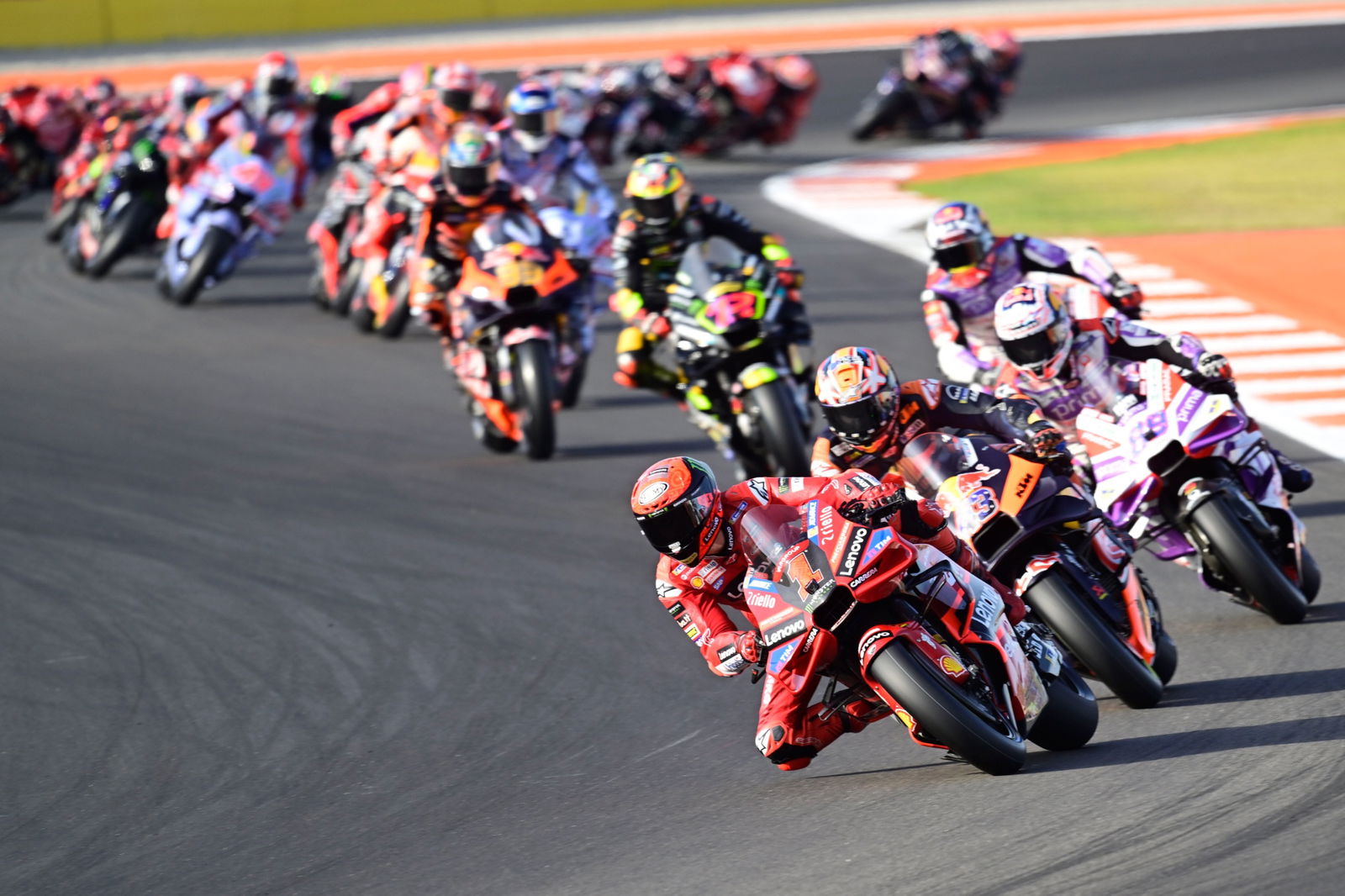
Crash.net: The warning for low tyre pressure is gone for 2024?
Corrado Cecchinelli: “Yes.”
Crash.net: Will the limit of 50% of laps for a Grand Prix and 30% for a Sprint continue?
Corrado Cecchinelli: “It's under discussion.
“What is not under discussion is that the warning is gone. There will also be a flat penalty, which at the moment is disqualification, but this is under discussion. And the amount of the race [%] you have to stay above the minimum is also under discussion.
“So the penalty is under discussion, to be reduced from disqualification. And the amount of the race you have to be above minimum is under discussion, because it could become more than 50% for the full races.
“That’s because it’s possible there could be a lower minimum pressure. This will be decided by the tyre supplier.
“The idea is therefore that if the safety margin is reduced on the pressure, the requirement to meet that pressure should become longer. So you have to stay above a lower minimum for more time. It's a trade off.
“It may work better for the teams. Because the teams are complaining their maximum gets too high with that minimum.
“So if Michelin determines that they can reduce the safety margin on the minimum, by setting a lower pressure, it would also help reduce the maximum tyre pressure during a race.
“But we would want more laps to be done above a lower minimum, for safety reasons.
“It's a tricky combination but the tyre manufacturer is aware that the problem for the teams is to control the maximum pressure.”
Crash.net: If no disqualification, will there be a time penalty?
Corrado Cecchinelli: “I’m not involved but my understanding is that they are considering a big time penalty.”
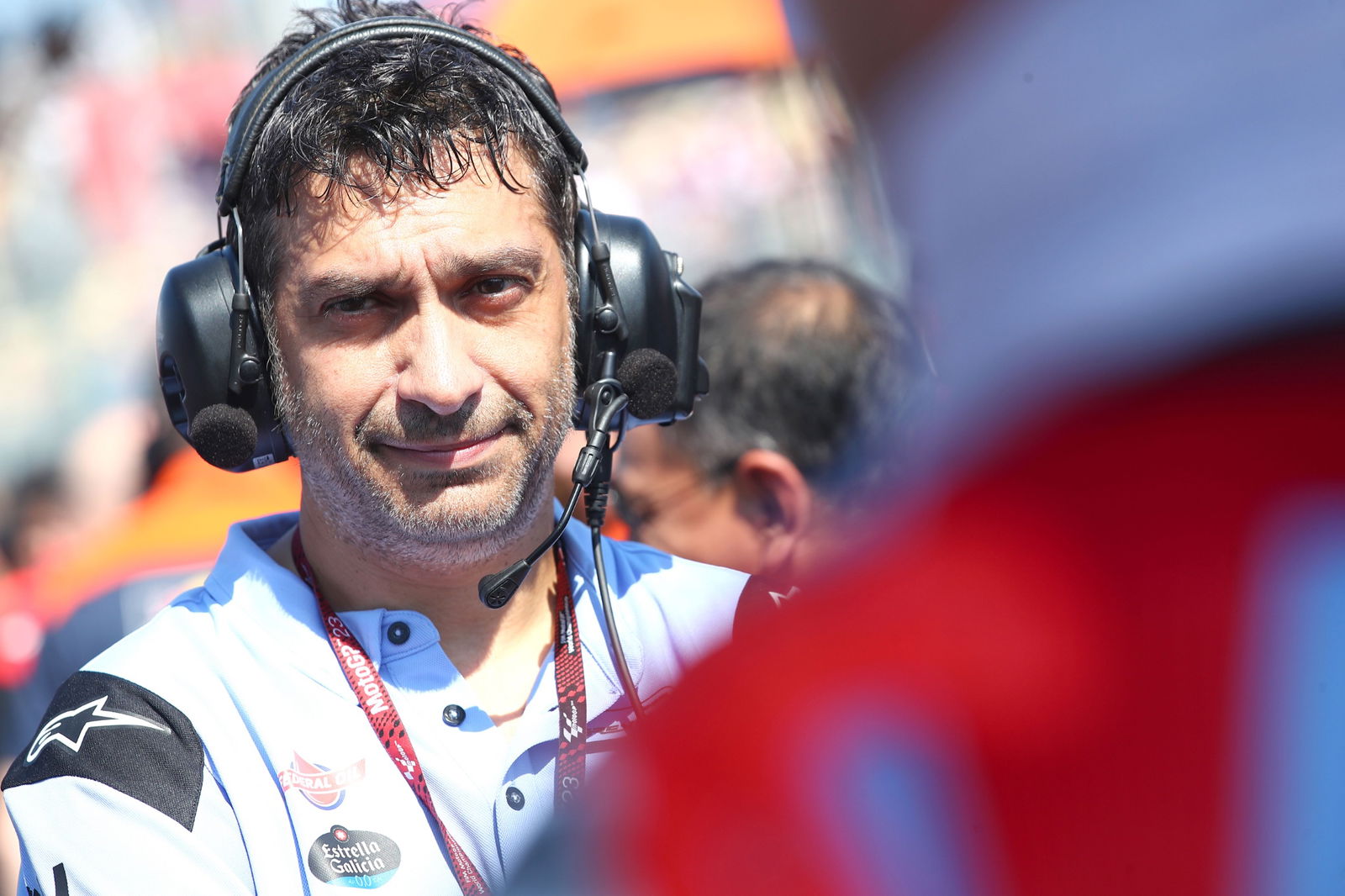
Frankie Carchedi: Tyre pressures “the worst part of the job”
Calculating tyre pressures is “probably the worst part of the job at the moment”, Gresini crew chief Frankie Carchedi told Crash.net.
“I am one of these people that likes to know everything. And that's something I can't control.
“Sometimes I don't sleep at night because I'm simulating races in my head. But it’s so difficult to do. I’ll give you two examples.
“Qatar, when Diggia won, we got it absolutely right. We said: ‘Starting from the front row, you’re going to lose three spots [to faster starting machines], then get back to 3rd or 4th. When you get to 2nd, stay there until about 5 laps to go when we’ll give you the [dashboard] message to pass for the win. That way your tyre pressure will be over [the minimum because you’ve been following].
“But next time at Valencia, Diggia did almost what we thought he would, except he rode on his own for more than half the race!
“He’d qualified 11th so we predicted he was going to be in a group for a good 10 laps and he wasn’t. There was a gap ahead. At the end he was only under [the 50% minimum] by one lap…
“It's something you cannot predict and it put us in a very tricky position because it's very easy to say, ‘Just start high’.
“But if you go too high, it's quite dangerous because of the amount of front lock and you can kiss goodbye to a good result.
“If you go the other way [too low], you get disqualified and then you're the idiot because you didn't get it right.
“I know Aleix was quite strong about [the tyre pressure rules] because he was under twice and had a time penalty.
“I love this sport. I don't want mockeries or silly things like instant disqualification.
“I know everyone's working and I think what they did last year [with the warning and escalating time penalties] was brilliant because it gave us all half a year to learn.
“But I'm hoping with what happened and everything, they're going to look and hopefully something will change before the start of this season.
“Some people say ‘just make it the same minimum starting pressure for everyone’ but how do you give the guy who starts first and the guy who starts last exactly the same? Because then one's going to be low, in the lead, and one's going to balloon behind other bikes.
“It's difficult. ‘Yellow cards’ [warning] means you have a little bit of leeway. That’s good to have in case something radical happens or the weather changes on the grid.
“There was one race last year, America [before the real time system was officially introduced], where I think Folger would have won because everyone was under at the start because it suddenly went really cold.
“What are you going to do this year, disqualify everyone and give Folger the race win? Because if you're Folger’s team manager you’re going to say ‘rules are rules’. So it's really tricky.
“I’m absolutely in favour of the rear pressure limit. I think it works well. It's consistent [during a race]. There's a little bit of leeway either way. It works OK. It's the front tyre that's difficult for everyone.
“One of the great things to see in our sport is if a rider has gone off and then fights back through the field.
“What will happen now is if somebody crashes or goes off track, they're going to be under the tyre pressure. So they might have the most amazing race ever, come through the field and then you disqualify them at the end?
“I'm sure everyone will be coming up with alarms and lights [to warn a rider if they are low during a race]. But what can you do, suddenly slow down and let everyone overtake you?
“You don't want to see anything like that. Everyone's working on it and I hope that something can be found.”
